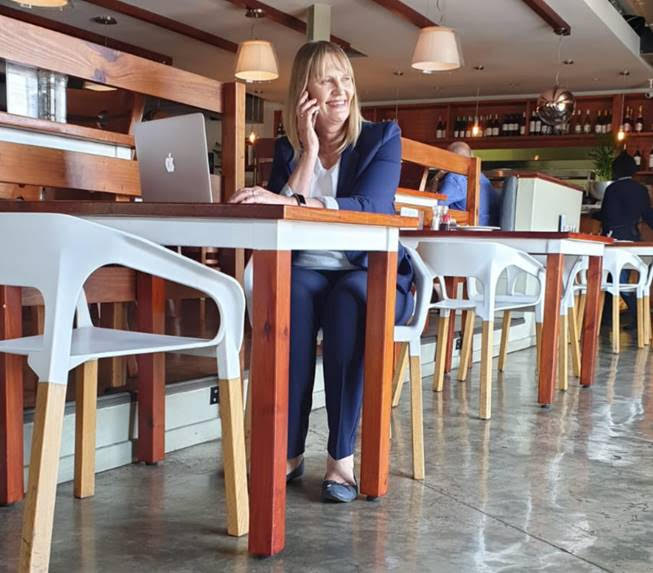Two truths are incontrovertible in 2021. The first is that everyone is tired of reading sentences that start with ‘because of the pandemic’. The second is that remote working has undergone a drastic evolution that needs refinement to mitigate long-term risk. Unfortunately, the former is the cause for the latter. Fortunately, the shifts in business thinking and remote working methodology present the organisation with an opportunity. As Karien Bornheim, CEO of FABS, points out, this is a time for management to focus on results and deliverables rather than on the traditional 8-5 workplace culture that withers and dies in a remote working world.
RELATED
Remote Work: Is Your Business’s IT Environment Ready For The Challenges Confronting The New Normal?
Working Remotely? Take Care Of Your Business Online Safety!
How Organisations Can Shape Their Culture For The New World Of Work
“Remote working is defined by the erratic nature of childcare, school, health, and access to basic necessities,” she explains. “Many services taken for granted in the past can simply stop, or pause, unexpectedly in the middle of the working week. This increases the need for human understanding and engagement a hundred-fold. Management, colleagues, and customers need to look at how they can connect on a human level, beyond deadlines and demands and late nights at the home office desk.”
Research by reputable health organisations has found that there are long-term mental health conditions associated with the pandemic. These range from work from home burnout to Zoom Fatigue to increased anxiety, chronic pain, and depression. Employees may feel isolated, they may take on too much work to distract themselves, or they may feel completely disengaged. All these factors are very real and can become increasingly complicated to manage if not addressed early. Organisations need to shift from the meeting mentality that many managers adopt to keep an eagle eye on their people. This only makes employees feel like their companies and managers do not trust them, which will lead to increased frustration, isolation, and lack of productivity.
“Work with employees to help them address their physical environments,” says Bornheim. “Ensure that your employees have a practical, physical space to work relatively undisturbed. A home office, a corner with a desk and a chair, sufficient light, network connectivity, and the right technology tools are absolutely mandatory. Give people what they need to connect, use the company systems and do their jobs, to take away the stress of poor working conditions or limited access to technology.”
Next, update all the HR policies and procedures to include social factors and the current working circumstances. Retrain management so that leaders work comfortably in this new world and are capable of adapting to both on-prem and home office working conditions. Give people the tools they need to adopt a hybrid approach and give them the communication and collaboration tools they need to do their jobs. Invest into technology that is easy to use and integrates seamlessly with existing systems – this will not only reduce the barrier to entry, but it will help people do their jobs more efficiently.
“Empower, empower, empower,” says Bornheim. “And remember that one person’s work from home dream is another person’s nightmare. Create working conditions that reflect the values and needs of your people, and you will be rewarded with engaged and productive employees.”
Amidst the softer parts of work from home best practice lies the hard tech and system stuff – the need to embed security into every system, to mitigate the risk of unexpected vulnerabilities, and to provide staff with ongoing security training. The pandemic arrived, fast, and companies responded even faster. Rapidly pivoting and adapting to the constant threats introduced by the virus have potentially opened companies up to risk. This is the time to focus on closing the gaps, from the home routers without passwords to the office passwords and the use of multi-factor authentication.
“Potential gaps exist on employee PCs, mobile devices, home networks, mobile applications, and passwords,” says Bornheim. “There is no time like right now for developing and updating a security and data protection policy that is in line with current reality. Also undertake regular, automated user training so that employees are hyper-aware of phishing and other security threats.”
And IT? Where should IT be looking right now? The answer lies in building solid remote working foundations and investing in processes, platforms, and solutions that ensure IT has what it needs to cope in a highly uncertain and ever-changing environment. First, set up an always-on service desk that has skilled resources behind automated responses; then work on ensuring the reliable availability of network connectivity and UPS’ to manage power failures and loadshedding. Define and assist by providing the right hardware, software, and tools, and by making software updates automated – this can go a long way to minimising unnecessary risk.
“IT has to protect the business and ensure continuity under any conditions,” concludes Bornheim. “By putting these measures in place, the teams are not just managing a pandemic, they are managing any future disaster with far greater efficiency. This trickles down the line towards improved employee engagement, better systems, robust security, and an agile business defined not by external complexity, but internal flexibility.”
Courtesy: FABS





























